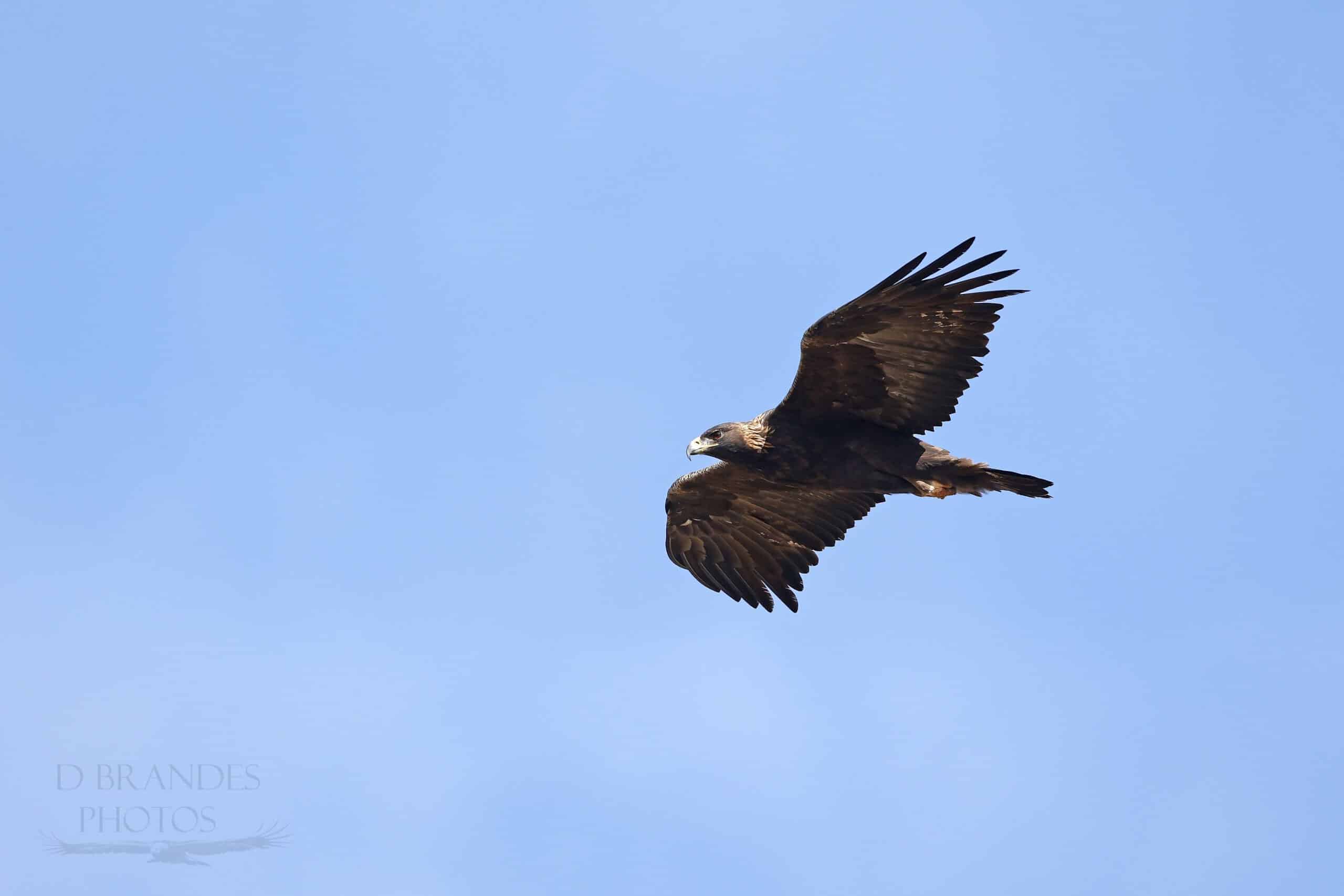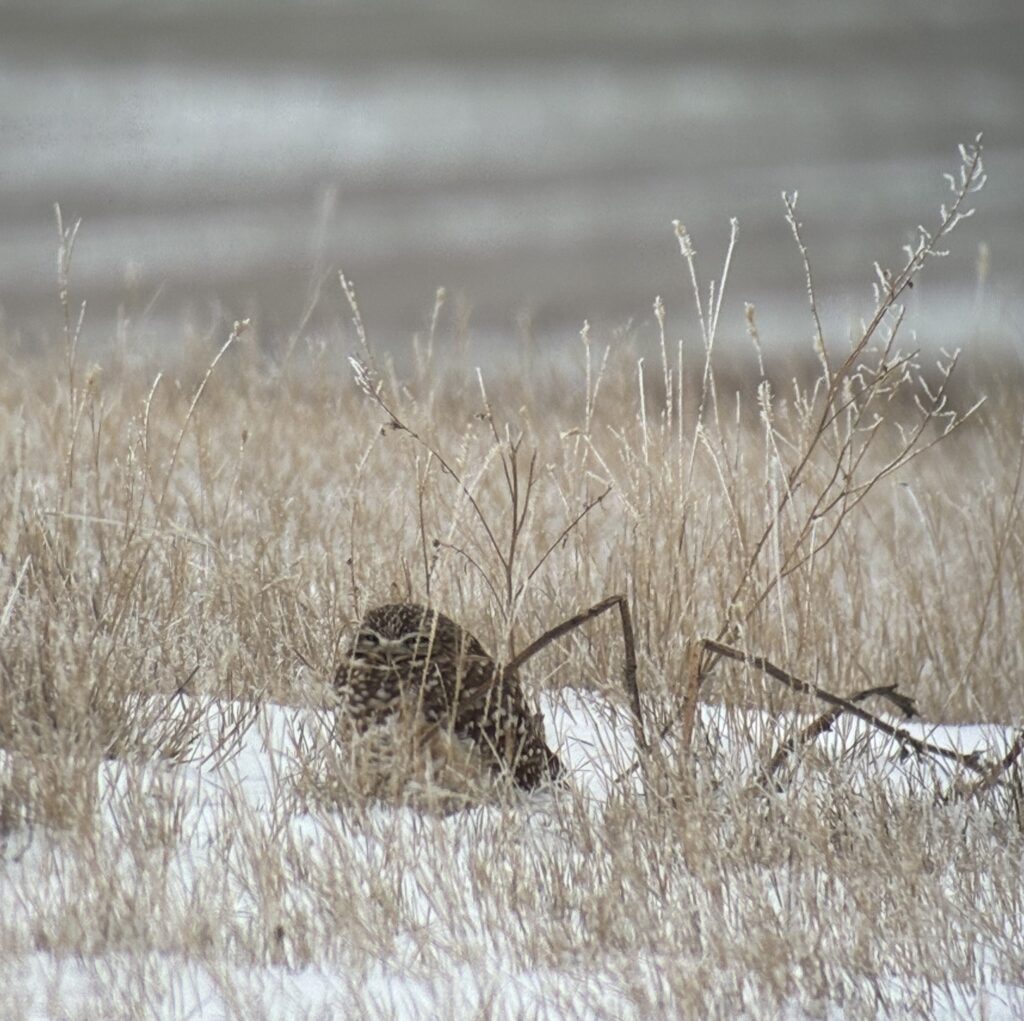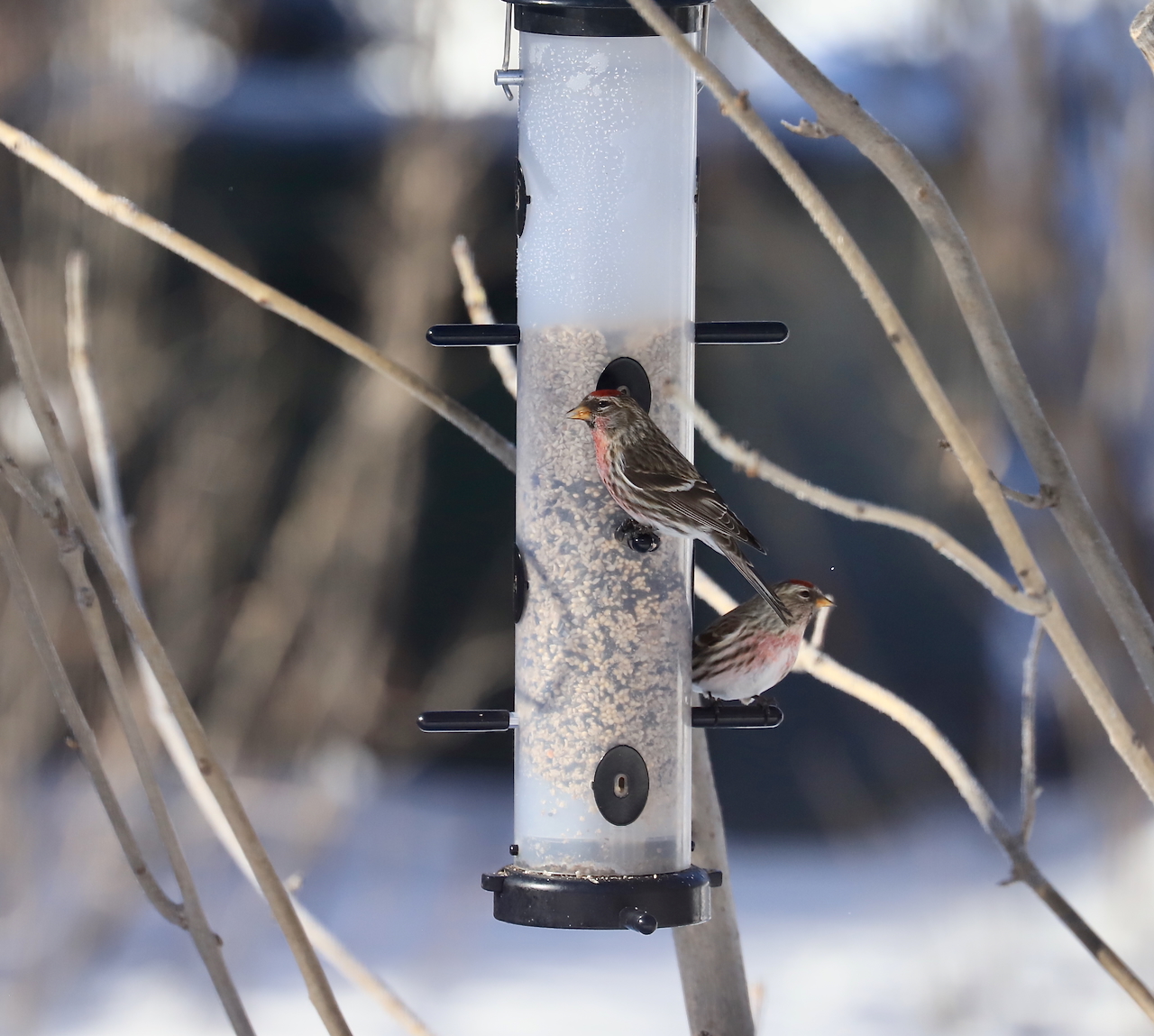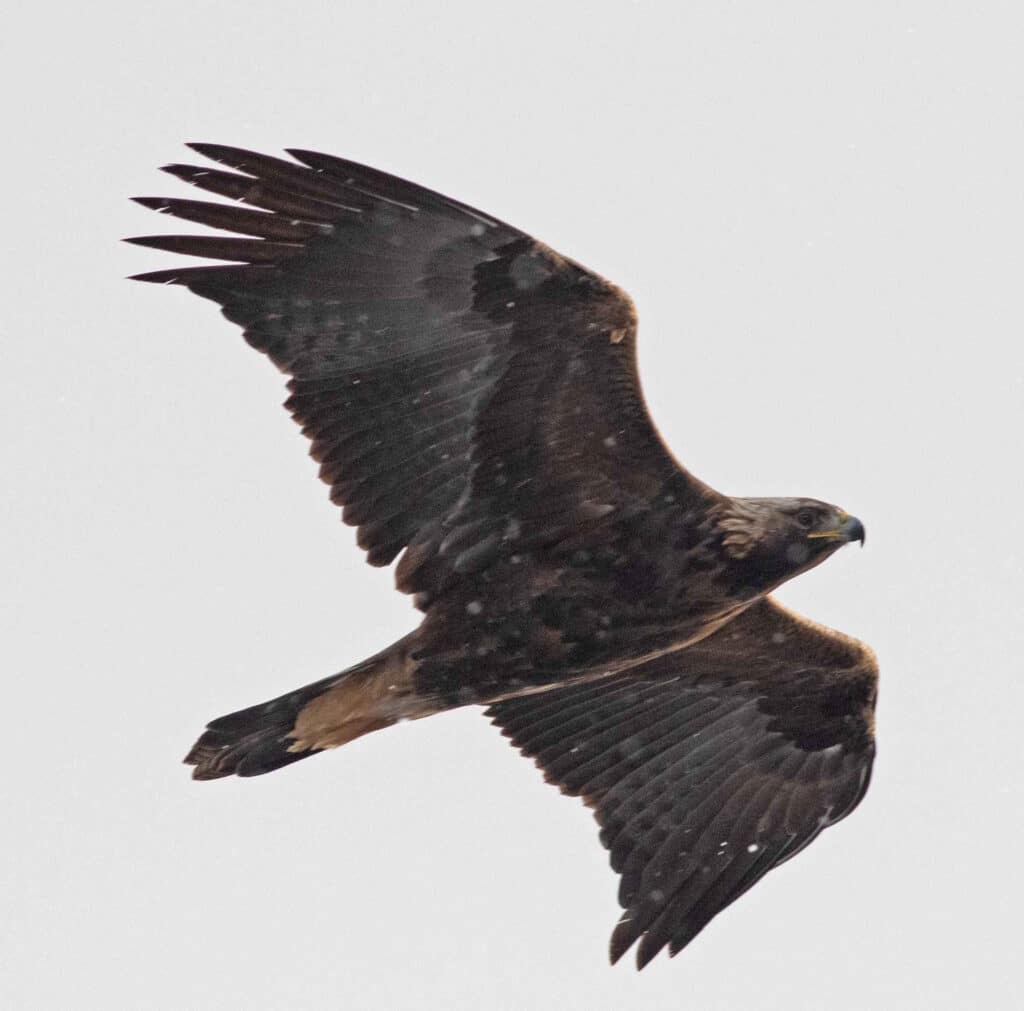Sacajawea Audubon Society Launches 32nd Season of Raptor Migration Counts atop Bridger Bowl
By Steve Hoffman
Sacajawea Audubon Society (SAS) celebrates the start of the 32nd consecutive annual Bridger Raptor Migration Count. Alex McTavish, Anna Wolke, and May Buckingham have been recruited as the three official, season-long biologist-observers for the fall 2023 migration season. They will be documenting all raptors migrating along the crest of the Bridger Ridge—above Bridger Bowl Ski Area— from 27 August through 31 October.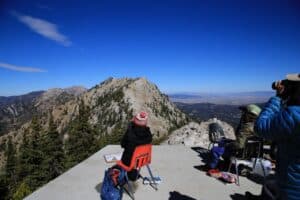
All three individuals have tremendous passion and enthusiasm for raptor research and conservation, and SAS is thrilled to have them on board throughout the 2023 raptor migration season!
The primary goals of the Bridger Project are to: a) assess the status and long-term trends of Golden Eagles and other fall migrant raptor species using this portion of the Rocky Mountain flyway, and b) to monitor landscape-level environmental changes using these widespread, apex predators as valuable indicators of ecological health.
SAS is partnering with HawkWatch International (HWI) to continue this critically important project. HWI initiated these science-based, season-long daily counts in 1992. A total of 17 raptor species are recorded each season, including Golden and Bald eagles, as well as many species of hawks and falcons, including Sharp-shinned and Cooper’s hawks, Red-tailed and Rough-legged hawks, Northern Harriers, Northern Goshawks, American Kestrels, Turkey Vultures, Ospreys, Peregrine and Prairie falcons, and several other raptor species. These migrants originate primarily from breeding areas throughout the U.S. Pacific Northwest, western Canada, and Alaska. Over-winter destinations include a wide range of latitudes (varying by species and breeding origins), from the western U.S. and Mexico to Central and South America.
Golden Eagle Count Trends
Autumn Golden Eagle counts in the Bridger Range have generally totaled from 1,000 to 1,800 per season, with up to 150 or more tallied on a single migration day. The largest Golden Eagle numbers are generally observed during the first 2–3 weeks of October. However, it is noteworthy that autumn migration counts of Golden Eagles at this and other western sites have shown highly significant declines, particularly from 2000–2010.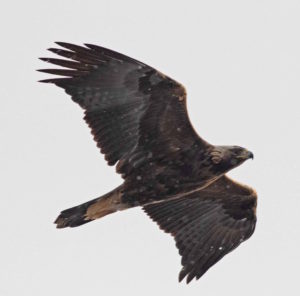
Importantly, during the most recent decade, Golden Eagle counts seem to have stabilized. The cause of the long-term Golden Eagle decline is not fully understood; our Bridger findings (and counts conducted elsewhere in the western U.S.) have inspired in-depth Golden Eagle research being conducted by the US Fish & Wildlife Service across the western United States and Alaska.
Raptor Viewing Tips for the Bridgers
The best overall raptor viewing for a variety of migrant raptors atop the Bridgers is from mid-September through mid-October. The general public is invited to join Alex, Anna, and May to witness one of nature’s most spectacular phenomena as these majestic birds migrate south over the Bridgers!
Additional volunteer observers are always needed—and most welcome—to help conduct these counts. For those in good physical condition, it is a 1.5–2 hour hike to the observation point (2,000-ft. elevation gain). Anyone wishing to volunteer should contact Project Coordinator Steve Hoffman at swhoffman0322@gmail.com or (406) 461-5714. Folks are welcome to visit www.hawkcount.org or www.sacajaweaaudubon.org to obtain the daily count totals.
Project Funding
It’s always a challenge to find support for our long-term Bridger raptor population monitoring efforts. The 2023 budget for this important work is $19,500. Contributions in any amount are greatly appreciated!! Please send your check (with Bridger Raptor Count on memo line) to: Sacajawea Audubon Society, PO Box 1711, Bozeman, MT 59771. THANK YOU!!.

